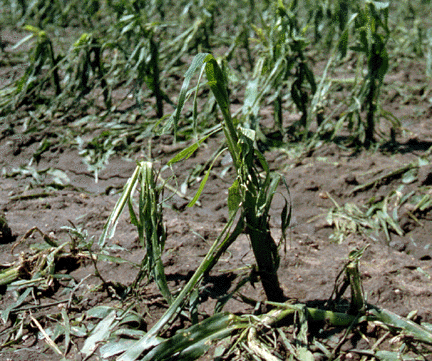The Senate Agriculture Committee has approved a five-year, $480 billion farm bill that creates a new entitlement for federal insurance to cover farmers’ “shallow” losses of revenue.
The current farm bill expires in September. The new bill would repeal direct payments to farmers, ACRE (average crop revenue election) payments, and countercyclical payments. Overall, the Congressional Budget Office estimates the measure, as passed by the committee, would save $24.7 billion over the next 10 years.
More Cuts in White House Budget
But that figure is well below the $33 billion in cuts that had been called for in the White House budget. And the bill doesn’t cut at all into the $9 billion federal crop insurance program, under which taxpayers pick up the tab for more than 60 percent of farmers’ premiums. Actually, the crop insurance program is set to grow by $2.7 billion over the next decade, due largely to $3.2 billion in additional subsidies for “stacked income protection” for cotton farmers.
The bill also blocks the U.S. Department of Agriculture’s Risk Management Agency from attempting to use its leverage to drive a harder bargain with the private crop insurance industry. In response to the 2011 Standard Reinsurance Agreement, in which $6 billion was cut from federal crop insurance subsidies through USDA negotiations, the Senate bill includes language requiring the next SRA must be “budget neutral.”
Another $29 Billion
The bill also takes most of the savings from canceling direct payments and funnels them into a new “agricultural risk coverage” program. This program would pay participating farmers who see revenues from a crop fall 11 percent to 21 percent below the five-year average. This new “shallow loss” coverage is projected to cost taxpayers $29.2 billion over the next decade.
“What we actually have today is so far beyond a program that would be limited to underwriting crop losses that the reason we have a federal crop program, you can’t look to economics for it. You have to look to politics for it,” said University of Iowa economic Bruce Babcock, who in April released “Giving It Away Free,” a crop insurance study that concludes it would be cheaper to give free crop insurance that covered 70 percent of every farmer’s yields than to run the program as currently structured.
Babcock says he doesn’t support free crop insurance but believes the conclusion demonstrates how wasteful the program is, and how badly it needs to be reformed.
Babcock said using subsidies to take risk out of farming makes it “a lower-risk business so that bankers in some sense have less risk and have to pay attention less than they otherwise would . . . And also then you have a big interest group, which is the crop insurance industry, which has every incentive to lobby for the maintenance of the program” because every year insurers are paid $3 billion to $4 billion in subsidies to deliver the program.
Internet Info
“Giving It Away Free,” Bruce Babcock: http://heartland.org/policy-documents/giving-it-away-free-free-crop-insurance-can-save-money-and-strengthen-farm-safety-n




